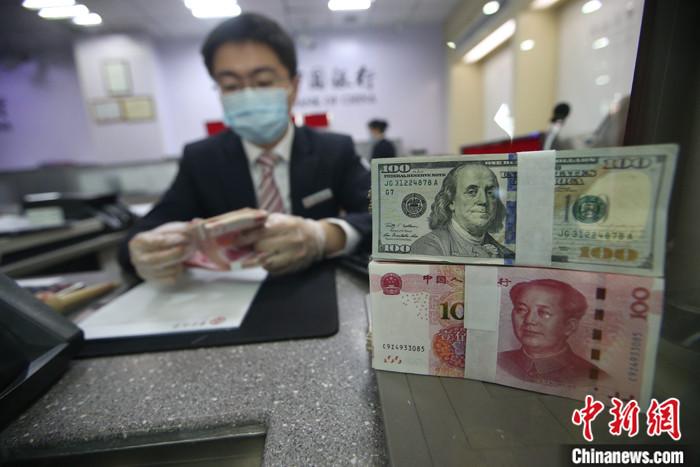China News Service, Beijing, August 6 (Reporter Xia Bin) China Foreign Exchange Trading Center reported on the 6th that the central parity of the RMB against the US dollar was 6.9438, an increase of 314 basis points from the previous trading day. After three consecutive trading days, the RMB The central parity against the US dollar has hit a new high in the past five months.
The data picture shows staff of a bank in Taiyuan, Shanxi, counting currency. Photo by China News Agency reporter Zhang Yun
The onshore and offshore RMB spot exchange rates against the US dollar also both rose above 6.94 in the previous trading day. The former hit 6.9361 at the highest point, and the latter reached 6.9272. Judging from the early trading trend on the 6th, both of them are on and off the 6.94 line. fluctuation. The U.S. dollar index continued to fall, frequently hitting the 92 range since the end of July, falling to its lowest level in more than two years.
Soochow Securities Research Report believes that from a fundamental point of view, domestic and foreign demand will be further stabilized to provide more support for industry-led recovery. China’s economic growth in the third and fourth quarters is expected to return to above the potential growth rate, which will be significantly higher than the rest of the world The major economies set the tone for the appreciation of the renminbi in the internationalization process.
In addition, in the context of loose global liquidity, the US dollar may enter a new round of depreciation cycle and the demand for the US dollar is gradually weakening and other external factors will also support the appreciation of the RMB exchange rate.
The deputy director of the CITIC Securities Research Institute clearly believes that under the influence of fundamental factors and monetary policy factors, the RMB exchange rate has support in the direction of appreciation, and it is possible to approach 6.9. As far as the current situation in China is concerned, the RMB exchange rate that is too strong or too weak is not the "optimal solution." Maintaining the relative stability of the exchange rate within a reasonable range may be more beneficial to the capital market and the economy as a whole. (Finish)

